Last Updated on 8 months
Enhancing Your Winter Travel Safety with the Right Tires
Driving in colder months brings challenges, making it crucial for drivers to equip their vehicles with the right accessories. Winter tires ensure safety and improve vehicle control on slippery surfaces. Unlike all-season tires, which can struggle in temperatures below 45 degrees, properly designed winter tires offer enhanced traction and confidence in snowy and icy conditions. Consequently, the need for winter tires should not be underestimated, as investing in them can significantly improve road safety for the driver and others on the move.
Key Takeaways:
- Winter tires provide better traction in snowy and icy conditions than all-season tires.
- Improved safety and vehicle control are significant benefits of winter tires during colder months.
- Winter tire designs and materials are tailored for colder temperatures and challenging road conditions.
- Drivers in harsh winters should invest in dedicated winter tires for optimal performance and safety.
- Tire symbols and ratings like the Three Peak Mountain Snowflake (3PMSF) mark indicate improved traction in snow for non-dedicated winter tires.
Understanding the Need for Winter Tires
Winter tires are a critical choice for colder climates due to their design and materials that provide superior grip and traction. With softer, more flexible rubber and tread patterns designed to bite and dig into snow and ice, winter tires maintain better contact with the road than all-season tires, designed for higher temperatures and dry roads. Therefore, the need for winter tires significantly enhances driving safety in winter conditions, reducing the chances of spinning out or struggling with grip on chilly, wet roads.
What Makes Winter Tires a Critical Choice for Colder Climates?
The importance of winter tires lies in their design and materials, specifically engineered for colder climate driving. These factors contribute to their unmatched traction and performance in icy and snowy conditions. Here is a summary of the specific features that make winter tires an essential choice for winter driving:
- Softer and more flexible rubber
- Specialized tread patterns for snow and ice
- Higher silica content
- Tread designs optimized for biting into snow and ice
Differentiating between All-Season and Winter Tires
All-Season vs Winter Tires:
| Aspect | All-Season Tires | Winter Tires |
|---|---|---|
| Temperature Range | Optimal above 45°F | Optimal below 45°F |
| Traction in Snow and Ice | Adequate for moderate conditions | Superior performance |
| Tread Design | Wider for dry roads | Narrower for cutting through snow |
| Rubber Compound | Ordinary compound | Specialized silica compound blend |
This fundamental distinction underscores the need for winter tires in snowy, icy conditions for optimal safety and handling.
Assessing the Benefits of Winter Tires for Safety and Traction
The winter tire benefits for safety and traction are considerable. They are built to handle the demands of winter weather, offering a level of performance that all-season tires cannot compete with in snow and ice. With specialized tread patterns, silica compound blends, and higher silica content, winter tires present an unmatched level of traction that can mean the difference between maintaining control and facing potential hazards on wintry roads.
The Science Behind Winter Tire Technology
Winter tires boast a superior grip on snow and ice thanks to softer, more flexible rubber compounds that remain pliant in low temperatures. Including silica in the rubber mix enhances this flexibility while improving traction on icy surfaces. Additionally, the design of winter tires often features narrow treads, which are better for moving forward through heavy snow than broader impressions typical of all-season tires.
Materials and Design: How Winter Tires Provide Superior Grip
The secret behind winter tires’ superior grip lies in their materials and design. As mentioned above, the main component is the softer, flexible rubber compound. This material stays supple even in extreme cold, maximizing traction and minimizing sliding risks on slick surfaces.
Soft rubber compounds combined with specialised winter tire designs provide a superior grip in snowy and icy conditions.
The primary winter tire materials include natural and synthetic rubbers combined with silica. Silica, in particular, plays a pivotal role in improving the tire’s grip on icy surfaces.
Winter Tire Tread Patterns and Their Impact on Traction
Aside from their material composition, winter tire technology heavily relies on tread patterns. These patterns are skillfully engineered to provide maximum traction in winter conditions. Below are some noteworthy characteristics of winter tire tread patterns affecting traction:
- Higher number of biting edges and sipes
- Deeper grooves for better snow and slush channeling
- Narrow treads for efficient movement through heavy snow
These tread patterns are often more aggressive to ensure adequate grip on snow and ice. The sipes in the tire tread hook into the snow and ice more effectively, while the increased number of biting edges provides enhanced traction. Deep grooves in the tread design help to channel snow and slush away from the tire, reducing the risk of hydroplaning.
Real-World Scenarios: Winter Tires in Action
Winter tires prove their worth in real-world scenarios where drivers face wet, snowy, or icy conditions. Whether deep, heavy snow or a thin layer of ice, winter tires’ superior design and compounds deliver reassuring traction and stability. They enable safer steering and braking, reducing the risk of skids and improving overall vehicle control compared to all-season tires, especially in sudden winter storms or mountain roads where conditions can change rapidly.
To further illustrate the importance of winter tire performance in various real-world conditions, consider the following examples:
- City commuting: Winter tires are crucial for drivers in urban environments where roads can become treacherously icy or slushy. The added grip and stability provided by winter tires significantly improve the safety of the driver’s and surrounding traffic.
- Mountain driving: Drivers navigating the winding mountain roads will appreciate the improved handling and steering offered by winter tires. The extra traction from winter tires can be a lifesaver in steep terrain with curves and narrow passages.
- Rural living: Living in areas with unpaved or poorly maintained roads may require even more significant winter tire performance. The ability to safely traverse rugged terrain is necessary for those relying on their vehicles in harsh winter conditions.
Winter tire performance varies across brands and models, offering unique advantages and configurations. The table below provides a snapshot of notable examples:
| Brand | Model | Key Feature |
|---|---|---|
| Bridgestone | Blizzak WS90 | Improved hydroplaning resistance |
| Michelin | X-Ice Xi3 | Environmentally friendly design |
| Continental | VikingContact 7 | Optimized grip on wet and icy roads |
| Goodyear | Ultra Grip Ice WRT | Enhanced traction on ice and uphill slopes |
In conclusion, drivers prioritizing winter driving safety should not underestimate the importance of winter tire performance. Real-world winter tire usage has repeatedly demonstrated that investing in reliable winter tires can be the difference between a treacherous journey and a reliable, secure driving experience.
Choosing the Right Winter Tires for Your Journey

Various factors play a crucial role in making the right choice when selecting winter tires for your journey. These factors will help you get the best possible winter tire performance, safety, and longevity. Let’s explore the key factors to consider and understand the importance of tire symbols and ratings for winter performance.
Factors to Consider When Selecting Winter Tires
To choose the right winter tires, you need to consider:
- The type of vehicle you drive (SUV, car, or light truck)
- Your usual driving conditions and habits
- The specific weather challenges you face in your region
Dedicated winter tires are highly recommended for drivers facing heavy snowfall and icy conditions. However, those who experience less severe winters may choose tires marked with the 3PMSF symbol, which offers cold-weather performance without sacrificing all-year usability.
Reading Tire Symbols and Ratings for Winter Performance
A deep understanding of tire symbols and ratings is crucial when selecting the most suitable winter tires. The 3PMSF (Three Peak Mountain Snowflake) symbol is crucial to a tire’s winter performance abilities. This symbol signifies that:
- The tire has passed specific tests for snow traction
- It provides some level of grip on packed snow
The older M+S (mud and snow) rating does not offer this testament. Remember that the 3PMSF mark does not guarantee ice traction, braking, or cornering abilities in snow. Additionally, not all 3PMSF-rated tires perform equally well in wintry conditions. Therefore, researching specific brand performance variations is essential.
When choosing winter tires, look for the 3PMSF symbol, and consider your vehicle type, driving conditions, and regional weather challenges.
Choosing the right winter tires significantly ensures a safe and enjoyable winter driving experience. Carefully examine the factors mentioned and understand the tire symbols and ratings to select the best possible winter tires for your journey. Stay safe, and happy driving!
Winter Tire Performance: Myths vs. Facts
In this section, we will address common misconceptions about winter tires, debunk myths, and present the facts to inform your decision-making process better when selecting the right winter tires for your vehicle.
Addressing Common Misconceptions about Winter Tires
-
- Myth: Winter tires can only be used in extreme cold or snow.
Fact: Winter tires are safe in temperatures above 45 degrees, although they may wear faster due to the softer rubber compounds optimized for cold weather conditions.
-
- Myth: Winter tires can be used year-round without any issues.
Fact: While you can use winter tires year-round, doing so leads to rapid wear in warm weather and reduces the tire’s lifespan. Switching back to all-season or summer tires is recommended when temperatures rise consistently.
-
- Myth: All-season tires offer comparable performance in snow to winter tires.
Fact: Winter tires outperform all-season tires in deep snow or packed ice thanks to their specialized design and materials built explicitly for winter conditions.
-
- Myth: Only two winter tires are needed (on the drive wheels).
Fact: All four tires should be winter for balanced handling and optimal safety, ensuring uniform grip and traction across all wheels.
Understanding these common misconceptions about winter tires can help you make an informed decision when investing in tires for the winter season, ensuring your vehicle’s safety and enhanced performance during the cold months.
The Right Time to Switch to Winter Tires
Knowing when to switch to winter tires is crucial for maximizing their performance and your safety on winter roads. As a rule of thumb, consider changing when temperatures consistently fall below 45 degrees Fahrenheit, even if snow and ice haven’t appeared yet.
- Monitor temperatures: When average air temperatures drop below 45°F, consider changing your tires.
- Check the forecast: If the long-term forecast predicts colder weather or earlier snow, it might be the right time to switch to winter tires.
- Pay attention to road conditions. If icy roads or snow appear in your area, change the tires as soon as possible.
- Evaluate your schedule: If you plan a trip to colder regions or know you will travel through mountainous areas, change to winter tires beforehand.
For drivers living in the mountains or making frequent trips to colder regions, early installation of winter tires is particularly important to avoid being caught unprepared by sudden weather changes. Ideally, have winter tires installed in the late fall and switch back to all-season or summer tires in the spring when higher temperatures return.
As a general rule, it is wise to have winter tires installed in the late fall and changed back to all-season or summer tires in the spring once higher temperatures return.
By adhering to these guidelines regarding the optimal time for tire change, you can ensure that your vehicle is equipped to handle the challenges of winter driving while maximizing the lifespan of your tires.
Top Recommended Winter Tires for Different Vehicles
Selecting the perfect winter tires for your vehicle is essential for maintaining safety and performance during the colder months. To assist you in your search for the ideal tires, we’ve compiled a list of recommended winter tires for SUVs, cars, and light trucks. These recommendations are based on their exceptional ability to provide stable traction and handling in various winter conditions.
Best Picks for SUVs, Cars, and Light Trucks
- SUVs:
- Michelin X-Ice Snow SUV – Known for exceptional traction and stability in snowy, icy, and wet conditions.
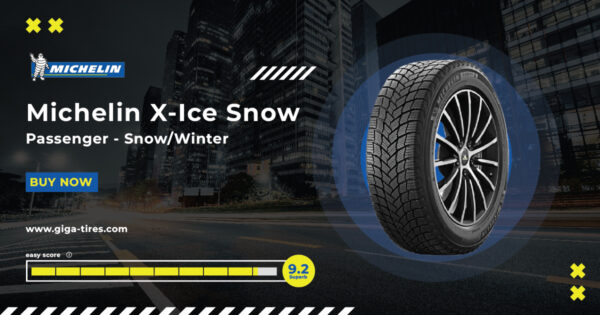
- Bridgestone Blizzak DM-V2 – Offers reliable traction in deep snow and slush, focusing on safe and comfortable handling.
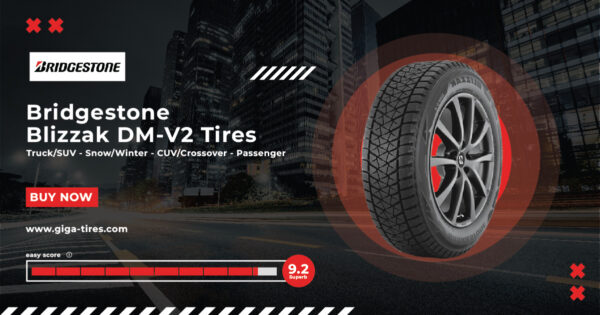
- Goodyear Assurance WeatherReady – Provides confident grip and control in challenging weather, including rain and light snow.

- Vredestein Quatrac Pro – An all-season option with impressive performance in cold and wet conditions.
- Michelin X-Ice Snow SUV – Known for exceptional traction and stability in snowy, icy, and wet conditions.
- Cars:
- Nokian Hakkapeliitta R5 – Delivers outstanding grip in deep snow and ice, ensuring excellent handling and performance.
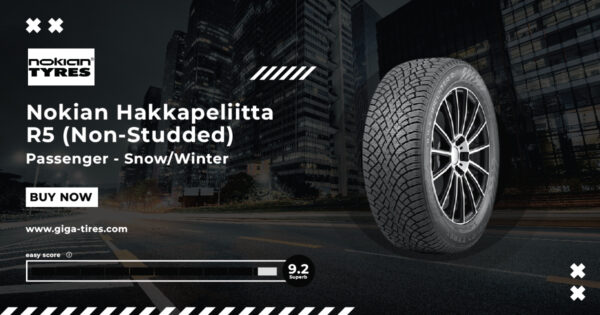
- Continental VikingContact 7 – An environmentally friendly option with impressive traction on snow-covered roads.
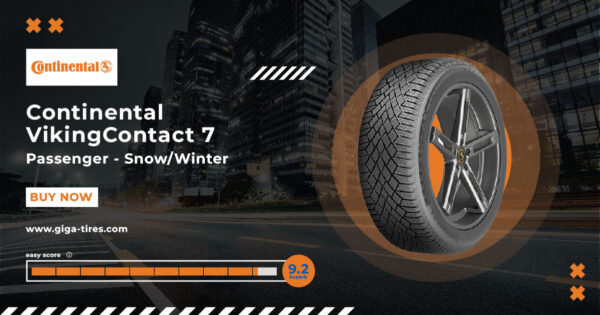
- Nokian Hakkapeliitta R5 – Delivers outstanding grip in deep snow and ice, ensuring excellent handling and performance.
- Light Trucks:
- Michelin X-Ice Snow – A long-lasting and reliable option with excellent handling in snowy and icy conditions.
- Dunlop Winter Maxx SJ8 Light Truck/SUV – Provides excellent performance and controlled handling in various winter scenarios.

Consider these top recommended winter tires when evaluating options for your SUV, car, or light truck. The investment in high-quality winter tires will ensure a safer and more enjoyable driving experience during the winter season.
Maintaining Your Winter Tires for Longevity and Effectiveness
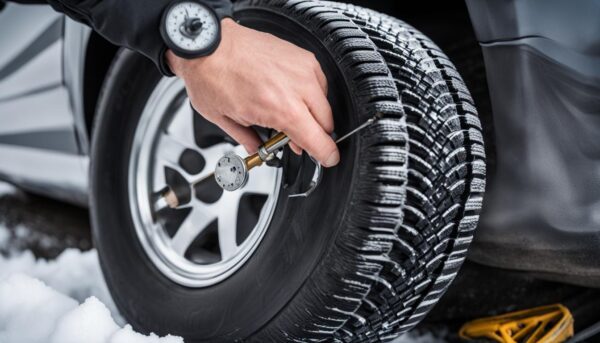
Winter tire maintenance is essential for ensuring the longevity of winter tires and maintaining their effectiveness throughout multiple winter seasons. Taking care of your winter tires will reward you with reliable performance and continued safety on the road. There are several critical aspects to adequately maintaining your winter tires:
- Regularly checking tire pressure
- Inspecting the tread for wear
- Rotating your tires as recommended
- Properly storing your tires during the off-season
Regularly checking tire pressure is crucial, as proper inflation is essential to tire performance and safety. Winter temperatures can cause tire pressure to drop, so it’s essential to check and adjust the pressure as needed. Use a reliable gauge when checking tire pressure, and follow the recommended pressure levels your tire manufacturer provides.
To ensure even wear and extend the lifespan of your winter tires, it’s essential to inspect the tread for wear and rotate your tires as recommended by the tire manufacturer. Rotating your tires can help prevent uneven wear, improving their performance and longevity.
Proper maintenance ensures that the tires will continue to provide safety and reliable performance throughout multiple winter seasons.
Finally, properly store your winter tires during the off-season to prevent damage or deterioration. A proper storage area should be relaxed, dry, and out of direct sunlight. It’s a good idea to clean your tires thoroughly before storing them, removing any dirt, brake dust, or debris. Keep your tires vertically, or use a tire storage rack to minimize sidewall stress.
| Maintenance Task | Why It’s Important |
|---|---|
| Regularly checking tire pressure | Ensures optimal tire performance and safety |
| Inspecting the tread for wear | It helps identify uneven wear and potential issues |
| Rotating your tires as recommended | Promotes even wear and extends tire life |
| Properly storing your tires during the off-season | Protects tires from damage or deterioration |
By performing regular winter tire maintenance, you’ll maximize your winter tires’ longevity and ensure their effectiveness throughout the cold months. This ultimately translates to safer and more reliable performance on the road, making your journey safer and more enjoyable.
Winter Driving Safety Tips Beyond Just Tires
Additional Precautions for Navigating Wintry Roads
While winter tires are critical in ensuring safety during the colder months, it’s essential to consider other factors when navigating wintry roads. These additional precautions can significantly reduce the risk of accidents and help you stay safe in challenging conditions.
- Adjust your driving speed: Always reduce your driving speed to match road conditions, ensuring you have enough time to react to sudden changes or obstacles.
- Increase following distance: Allow more space between your vehicle and the one in front, giving you ample braking distance in slippery situations.
- Avoid sudden maneuvers: Refrain from abrupt steering inputs or braking, as these actions can cause a loss of traction on icy or snowy roads.
Preparing an emergency kit can assist in an unexpected breakdown or unforeseen event. Items to include in the kit are:
- Blankets
- Flashlights with extra batteries
- Non-perishable food and bottled water
- First-aid supplies
- Emergency flares or reflective triangles
Moreover, regular vehicle maintenance ensures that your car is in optimum condition for winter driving. Some key components to inspect and maintain include:
- Lights: Ensure all exterior lights function properly, improving your visibility and making your vehicle more visible to others on the road.
- Brakes: Regularly check the brake system for wear and functioning, as effective brakes are critical for driving on wintry roads.
- Fluids: Verify that necessary liquids, such as antifreeze and windshield washer fluid, are at proper levels and appropriately suited for winter.
- Wipers: Install winter-specific wipers that clear snow and ice from your windshield.
- Battery: Check your vehicle’s battery for sufficient voltage, as colder temperatures often cause reduced battery performance.
Remember, combining effective winter driving skills with the right equipment, including high-quality winter tires, can create a significantly safer and more enjoyable driving experience during the winter months.
Conclusion
Investing in winter tires is a practical and essential safety measure for the winter season. They significantly improve safety and vehicle handling in snow, slush, and ice, far surpassing the capabilities of all-season tires in these conditions. With tire technology continually advancing, winter-specific tires illustrate their importance for those facing chilly and frosty roads.
When investing in winter tires, factors such as driving habits, typical winter weather, and vehicle type should be evaluated. Choosing the right winter tires ensures a safe and enjoyable winter trip for all road users.
Ultimately, winter tires are an essential piece of equipment for tackling the winter season. Investing in the proper tires for your vehicle and driving conditions can enhance your safety, vehicle performance, and overall driving experience during the cold months.
FAQ
What makes winter tires a critical choice for colder climates?
Winter tires are designed with softer, more flexible rubber and tread patterns specifically for snow and ice. These features provide better grip, traction, and overall driving safety than all-season tires in cold, wet weather conditions.
How do winter tires differ from all-season tires?
All-season tires are designed for a balance of conditions in moderate weather, lacking specialized compounds and tread designs found in winter tires. Winter tires use more flexible rubber compounds and have tread patterns optimized to maintain contact with the road in snowy, icy conditions, making them more practical for winter driving.
When is the right time to switch to winter tires?
It is recommended to switch to winter tires when temperatures consistently fall below 45 degrees Fahrenheit, usually in late fall, even if snow and ice are not yet present. Change back to all-season or summer tires in the spring as temperatures rise.
What factors should I consider when selecting winter tires?
Factors to consider when selecting winter tires include your vehicle type (SUV, car, or light truck), your usual driving conditions, and the specific winter weather challenges you face. Dedicated winter tires are advised for areas with heavy snowfall and icy conditions, whereas tires with the 3PMSF symbol may suffice for less severe winters.
How should I maintain my winter tires for longevity and effectiveness?
To ensure reliable performance throughout multiple winter seasons, regularly check tire pressure, inspect the tread for wear, rotate tires as the manufacturer recommends, and store winter tires properly during the off-season.
What are some common misconceptions about winter tires?
Common misconceptions include the belief that winter tires can only be used in extreme cold or snow, that all-season tires perform just as well as winter tires in the snow, and that only two winter tires are needed (on the drive wheels). In reality, winter tires are safe for use in temperatures above 45 degrees and are more effective than all-season tires in snow and ice. For optimal safety, all four tires should be winter tires.
What are some additional precautions for navigating wintry roads beyond using winter tires?
Recommendations include reducing driving speed to match road conditions, increasing following distance for longer braking distance, avoiding abrupt steering inputs, maintaining your vehicle (e.g., ensuring lights and brakes are functional), and having an emergency kit on hand with items like blankets, flashlights, and food in case of a breakdown in cold weather.













 Français
Français Español
Español